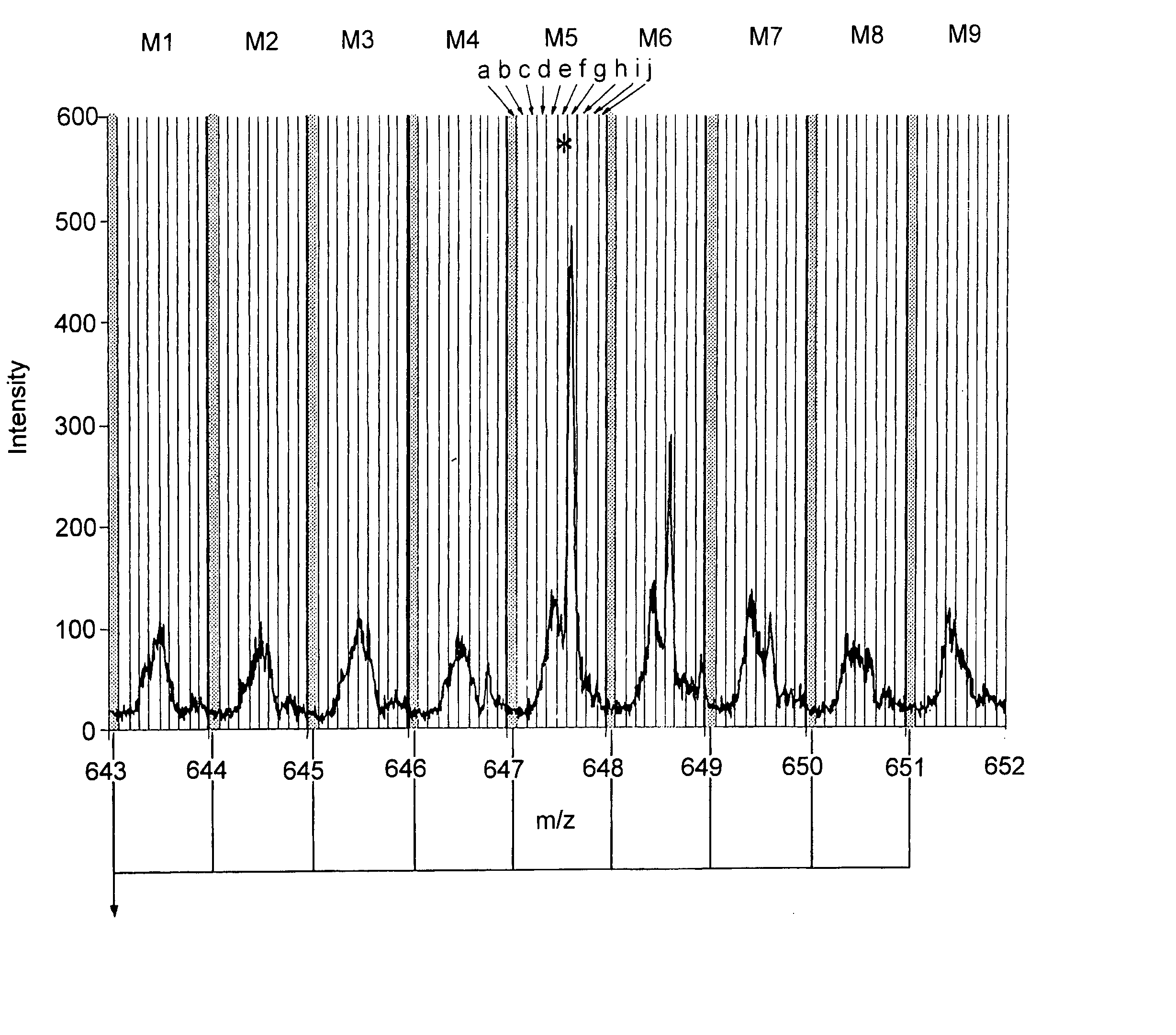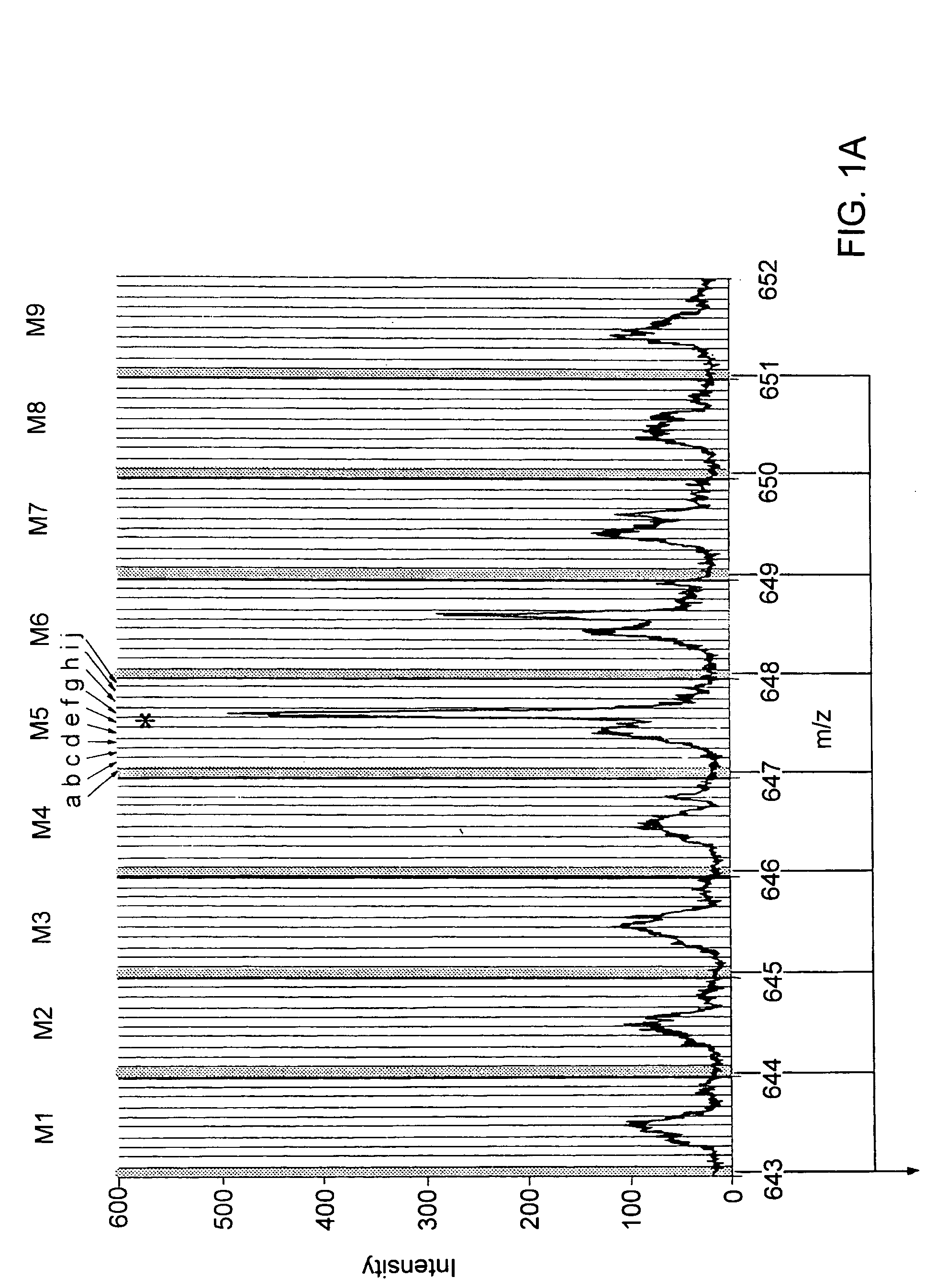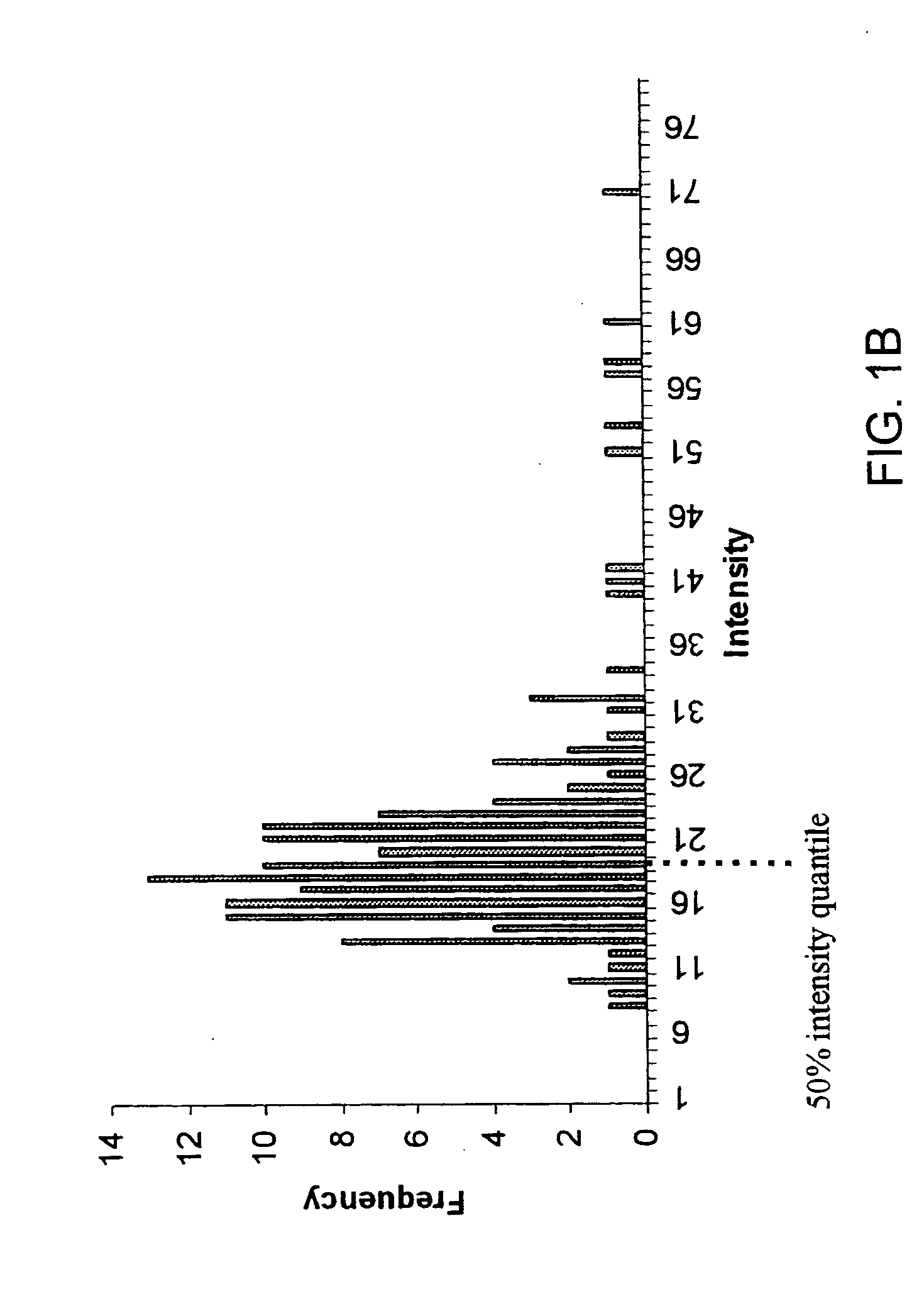Mass spectrometer
a mass spectrometer and mass spectrum technology, applied in the field of mass spectrometers, can solve the problems of adversely affecting mass measurement accuracy, many mass spectrometric techniques have detection limits which are restricted or otherwise compromised, and can be particularly problematic background chemical noise in a mass spectrum, so as to remove or reduce the effect of estimated background intensity
- Summary
- Abstract
- Description
- Claims
- Application Information
AI Technical Summary
Benefits of technology
Problems solved by technology
Method used
Image
Examples
Embodiment Construction
[0061] An embodiment of the present invention will now be described with reference to FIGS. 1A, 1B and 2. However, the embodiment shown and described with reference to FIGS. 1A, 1B and 2 has been simplified for ease of illustration. According to a particularly preferred embodiment, an overall mass window having a width of 21.0105 atomic mass units (Daltons) and comprising 21 nominal mass windows each 1.0005 atomic mass units (Daltons) wide is applied to a mass spectrum. Each nominal mass window is preferably divided into 20 discrete channels. However, for ease of illustration, the embodiment shown and described with reference to FIGS. 1A, 1B and 2 relates to using a smaller overall mass window which is only 9 atomic mass units wide and which comprises only 9 nominal mass windows each having a width of precisely 1 atomic mass unit (Dalton). Each nominal mass window is shown divided into 10 discrete channels, again for ease of illustration.
[0062]FIG. 1A shows a portion of a mass spec...
PUM
 Login to View More
Login to View More Abstract
Description
Claims
Application Information
 Login to View More
Login to View More - R&D
- Intellectual Property
- Life Sciences
- Materials
- Tech Scout
- Unparalleled Data Quality
- Higher Quality Content
- 60% Fewer Hallucinations
Browse by: Latest US Patents, China's latest patents, Technical Efficacy Thesaurus, Application Domain, Technology Topic, Popular Technical Reports.
© 2025 PatSnap. All rights reserved.Legal|Privacy policy|Modern Slavery Act Transparency Statement|Sitemap|About US| Contact US: help@patsnap.com



